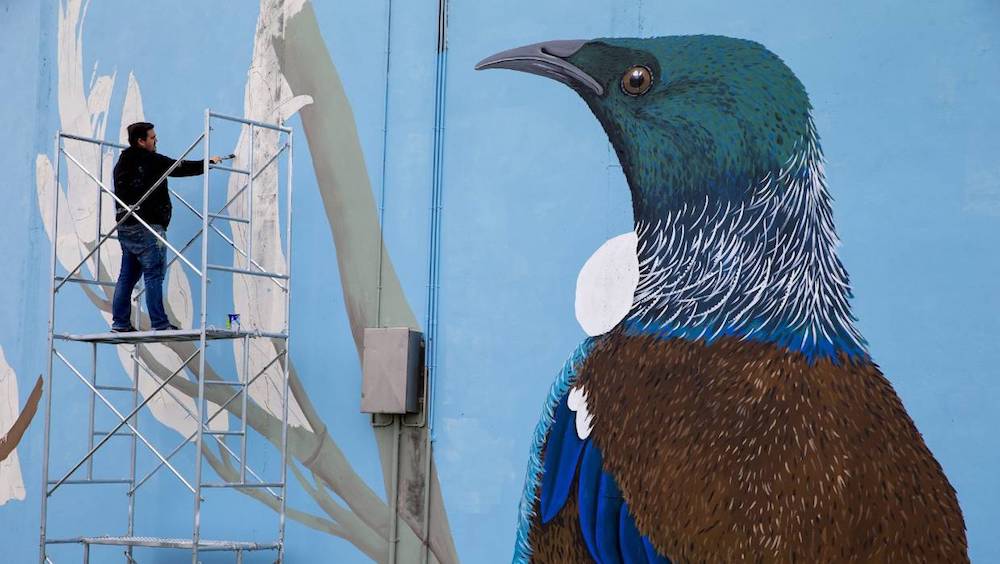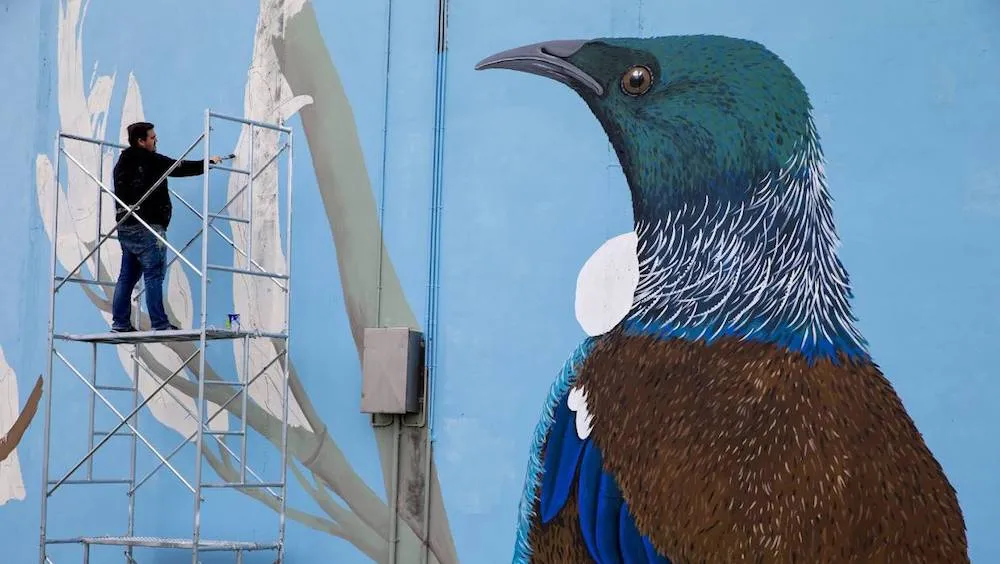Arts Smarts: Let’s talk about your online presence

If you’re going to make a living as a creative - whether that’s selling your art, providing advice, teaching, or something else - then you’re going to need something critical: customers. I caught up with Steve Adams from an agency called Socialize to get some tips on how you can create an online presence that does what you need it to do to make a living from your talent.
Not long ago, Steve ran a campaign called Boost Your Town. Him and his team went to a whole bunch of small towns throughout New Zealand, and helped local artists and small business owners use online tools to promote what they had to offer. During this project, he saw all kinds of people using online tools in different ways, so gained a lot of insight into what works. Here are Steve’s tips for artists:
Tip 1: A multi-pronged approach
An online presence is more than a single website or Facebook page. Rather, your online presence is the sum total of all of your efforts - and to really get solid value out of your online activity, you should have a few different channels.
This has two main benefits. For one, it helps you get in front of more people. Some people spend most of their time on Instagram, while others spend most of their time on Facebook, for example. If you’re on both of these platforms, you’ll have a higher chance of being seen by people who prefer one or the other.
The other key benefit of this approach is that it has a reinforcing effect. Someone may see your work on Instagram, then see it again on Facebook. This helps to solidify you in peoples’ minds, and potentially bring in more customers.
Tip 2: Give every platform a purpose
While being on multiple platforms is great, you can get even more value out of each one by having a “theme” for your content on that platform. For example, Steve told me about an artist based in Feilding named Joe McMenamin. Joe has a Facebook page, an Instagram page and a website. Each one has its own purpose. The Instagram page shows behind-the-scenes pictures and videos of things he’s working on. The Facebook page is a sort of shopfront for finished work. And the website is the shop itself - that’s where you can go to buy Joe’s art.

Each of these works together to achieve something slightly different, and the sum total is a really solid online presence that helps Joe make a living.
Tip 3: Have a shop!
This one's maddeningly basic. It’s all very nice to have a Facebook page that shows your work, and it’s nice to have an Instagram page that shows the process behind your work. But at the end of the day, you want people to buy stuff from you (or hire you, or even contact you). “If you don’t have a website, or somewhere where you’re selling your work, you’re just entertaining,” says Steve.
So make sure you have a place where interested people can buy your work from you, or hire you, or do whatever it is you need them to do to help you make a living. Otherwise, you’re just entertaining people! You can make an online store pretty easily with Squarespace.
Tip 4: Band together
When Steve was helping business owners in small towns, he repeated the same bit of advice over and over - work together! By working with other artists to promote each other’s pages, and make sure you’re using the same hashtags, you can amplify each other’s efforts.
Hashtags are a big one, particularly in regional centres. “There are tourists going up and down the country, using Instagram hashtags to navigate. If you’re in one of those hashtags, you’re going to be on these tourists’ radar,” says Steve. So make sure you have a good group of like-minded artists and small business owners, and work together to make your collective online presence bigger than the sum of its parts.
Tip 5: Be consistent
Once you’re jumping into online channels like Facebook, you really need to make sure you’re updating them on a regular basis. Otherwise, you end up with a “ghost page,” with posts months or years old. Steve says this is the same as a shop front with unwashed windows and rubbish all over the footpath - hardly inviting.
So make sure you’re updating your pages consistently, so they’re fresh and active.
Tip 6: Be authentic
This last tip may be the most important. Your overall goal with an online presence may be to sell something. But that doesn’t mean that your every post needs to be about selling. If all you do is try to push products or services onto people, you’ll turn them off.
So make sure you include a decent amount of content that’s authentic, and not sales-driven. That’s where the ‘behind the scenes’ stuff on Joe Mcmenamin’s Instagram really shines - it’s not actively trying to sell, but rather it’s just telling his Joe’s wider story. This is the kind of thing that hooks people, and ultimately gets them interested in what you have to sell, or say.
That’s it! Start with these 6 tips, and you’ll be well on your way to a solid online presence. How do you maintain your online presence? Leave a comment on our Facebook post to let us know.
